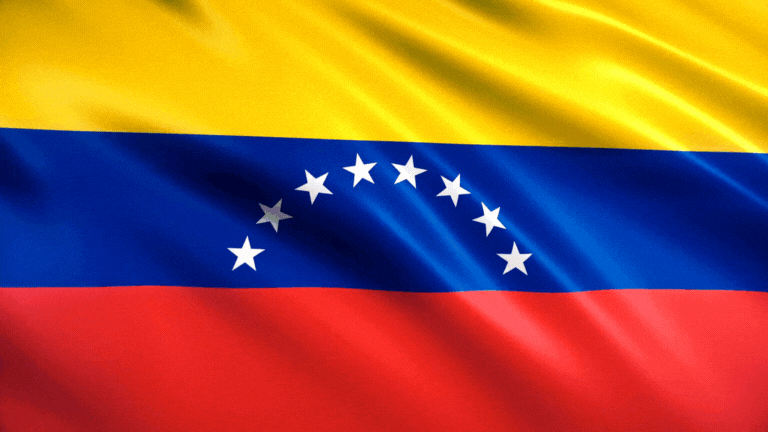Please be aware that this article may contain links to products and services we recommend. If you click on any of these links, we may earn a commission at no extra cost to you. We only endorse products and services that we believe will add value to our readers. Learn more here.
Venezuela Flag: History & Symbolism
Hack The Quiz
7/4/20243 min read
This article explores the history and symbolism of the Venezuela flag, highlighting Venezuela’s location in South America and explaining how the flag’s design reflects the nation’s fight for independence, its natural wealth, and unity.
Where is Venezuela?
Venezuela is located on the northern coast of South America, bordered by Colombia to the west, Brazil to the south, Guyana to the east, and the Caribbean Sea to the north. Known for its diverse geography, which includes mountains, plains, and the Amazon rainforest, Venezuela is also famous for its rich oil reserves and natural beauty, including the world’s tallest waterfall, Angel Falls.
Venezuela gained independence from Spain on July 5, 1811, becoming one of the first countries in Latin America to do so. The national flag, adopted shortly after, symbolizes the country’s journey to independence, its natural resources, and the unity of its people.
The History of the Venezuela Flag
The Venezuelan flag was first introduced by the revolutionary leader Francisco de Miranda in 1806 and was officially adopted on March 12, 1806, during the struggle for independence from Spanish colonial rule. The tricolor design of the flag was inspired by the ideals of liberty and equality and was intended to symbolize the bright future of the nation.
The flag’s most recent iteration, adopted in 2006, features eight stars that represent the original provinces that united in the fight for independence. The tricolor design has remained largely consistent, symbolizing the core values of liberty, courage, and the nation’s wealth.
Breaking Down the Venezuela Flag’s Design
The flag of Venezuela consists of three horizontal stripes—yellow, blue, and red—with eight white stars arranged in a semicircle on the blue stripe. Each element of the flag carries significant meaning tied to Venezuela’s history and ideals
Let’s break down the elements of the flag:
The Yellow Stripe
The top yellow stripe represents the nation’s wealth and natural resources, including its vast oil reserves, fertile soil, and abundant mineral resources. It also symbolizes the sun, which brings warmth and prosperity to the country.
The Blue Stripe
The middle blue stripe stands for the Caribbean Sea and Venezuela’s coastal heritage. Blue also represents freedom, reflecting the country’s struggle to free itself from colonial rule and establish its independence.
The Red Stripe
The bottom red stripe symbolizes the blood shed by patriots who fought for Venezuela’s independence. It reflects the courage and sacrifice of those who were willing to fight for liberty and sovereignty.
The Eight Stars
The eight white stars are arranged in a semicircle on the blue stripe. They represent the eight provinces that united to declare independence from Spain in 1811: Caracas, Cumaná, Barcelona, Barinas, Margarita, Mérida, Trujillo, and Guayana. Originally, the flag featured only seven stars, but an eighth star was added in 2006 in honor of Simón Bolívar’s decree, which called for the inclusion of an eighth star to represent the historical province of Guayana.
Final Thoughts
The flag of Venezuela is a vibrant symbol of the country’s independence, natural wealth, and resilience. The yellow, blue, and red stripes represent the rich resources, freedom, and sacrifices of the Venezuelan people, while the eight stars symbolize the unity of the provinces that joined together to fight for liberty.
Since its adoption, the flag has been a cherished emblem of national pride, flown during important celebrations such as Independence Day on July 5 and during international events. It serves as a reminder of Venezuela’s long struggle for freedom, its abundant natural resources, and its hope for continued unity and progress.
Expand your mind ...
Explore trivia that broadens your understanding and knowledge of the world.
WE ARE HERE FOR YOU
JOIN US and hack the quiz
info@hackthequiz.com
© 2024. All rights reserved.



